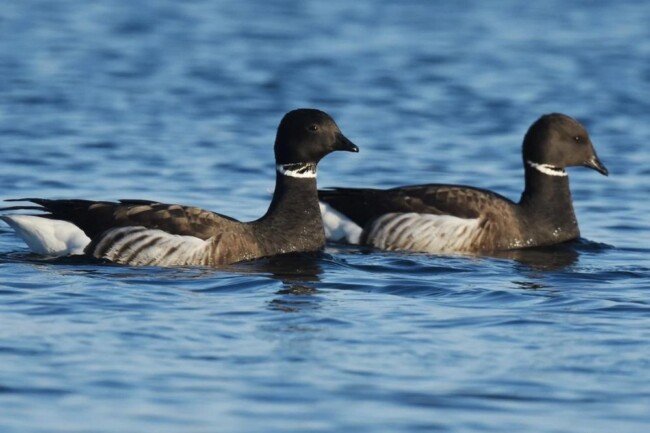As winter exhales its arctic yawn, and spring lifts her flowery head, many enjoy the birds’ migratory visit to Hudson County. One visitor in particular has a history as unique as her plumage. Though the Brant Goose presently appears in Hudson County, its appearance (and disappearance) has long puzzled farmers and academics alike — who for millennia believed this Goose to be born from…barnacles? Read on for more about this avian mystery about these Hudson County visitors.
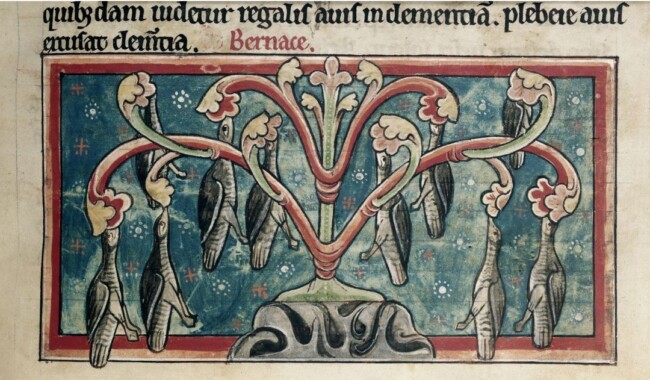
Photo Credit: Creative Commons
Take a Gander at This Gander
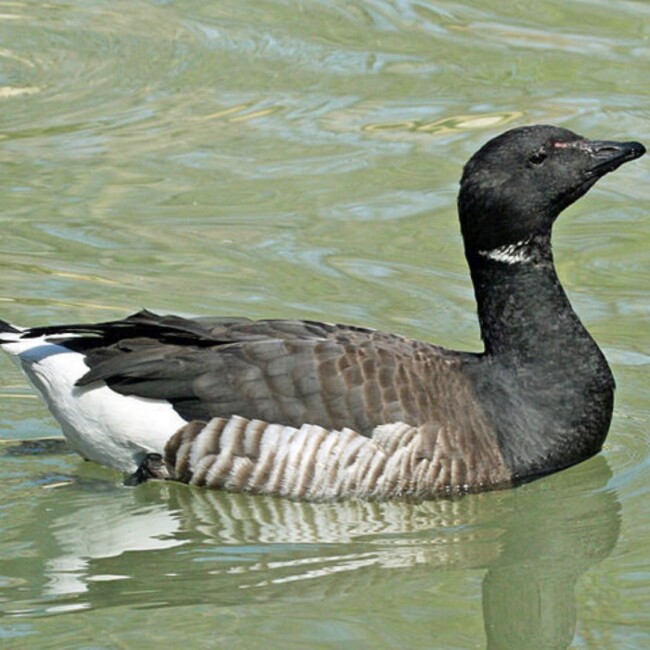
Photo Credit: Creative Commons
Known for their characteristically dark-colored plumage, the Brant was a favorite bird among Vikings, who are responsible for their present name deriving from the Old Norse word “brandgas” meaning “burnt goose.” In naming these birds, the Vikings unwittingly became the last people to provide an accurate contribution to science regarding the species. For the next millennia or so, academics routinely and ardently asserted that these geese were born from barnacles.
A Wild Goose Hunt
Before the advent of modern science, people had no idea where migratory birds went. This led many to draw their own…unusual conclusions.
Read More: The Best Hudson County Parks to Bird Watch
Gerald of Wales seems to have kicked off the “Barnacle Goose Myth” in 1188 when he wrote the hugely influential manuscript Topographia Hibernica. There, he claimed, “I have often seen with my own eyes more than a thousand-minute embryos of birds of this species on the seashore, hanging from one piece of timber, covered with shells, and already formed.”
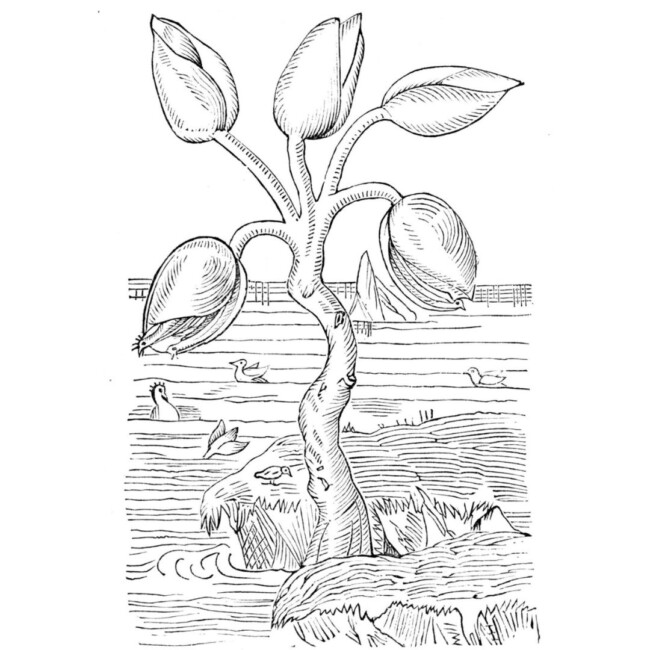
Photo Credit: Public Domain
He goes into even greater detail, doubling down on his outrageous claim:
“… there are many birds called barnacles (bernacae) … nature produces them in a marvelous way for they are born at first in gum-like form from fir-wood adrift in the sea. Then they cling by their beaks like sea-wood, sticking to wood, enclosed in a shell-fish shells for freer development…. thus in the process of time dressed in a firm clothing of feathers, they either fall into the waters or fly off into freedom of the air.”
What’s Good For The Goose Is Good For The Gander
Medieval monks eagerly endorsed the “Goose Barnacle Myth,” because if geese were born from barnacles, then the monks could gorge themself on geese during fasting days typically reserved only for “fish.”
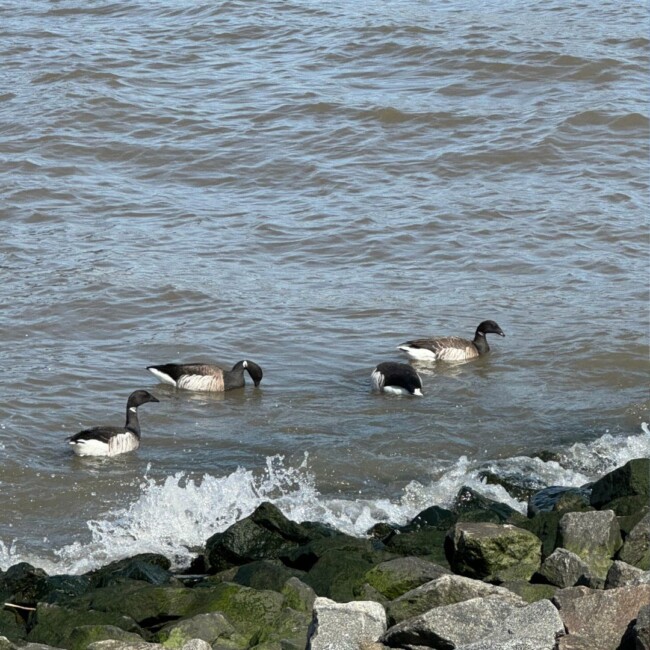
Monks propagated the “Goose Barnacle Myth” through Medieval manuscripts called “bestiaries.” Bestiaries were a comprehensive list detailing all the known beasts of the ancient world, compiled into one, encyclopedic manuscript.
But…How?
In 1606, the Italian naturalist, Ulysses Aldrovandi, details precisely how geese hatch from barnacles. Here you can see how they develop from barnacle into goose:
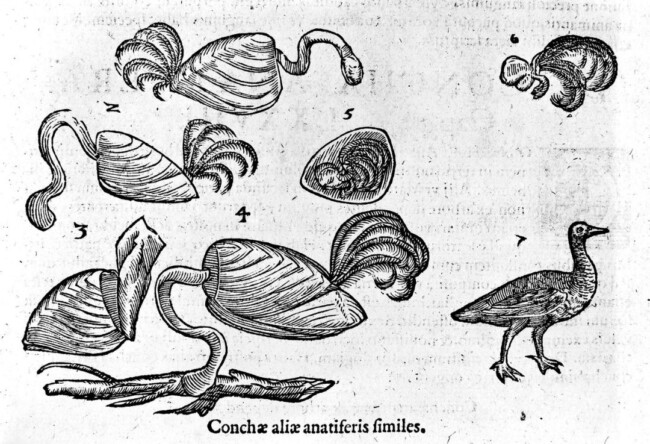
Photo Credit: Creative Commons
Ulysses further illustrates how the geese hatch into the water before swimming away:
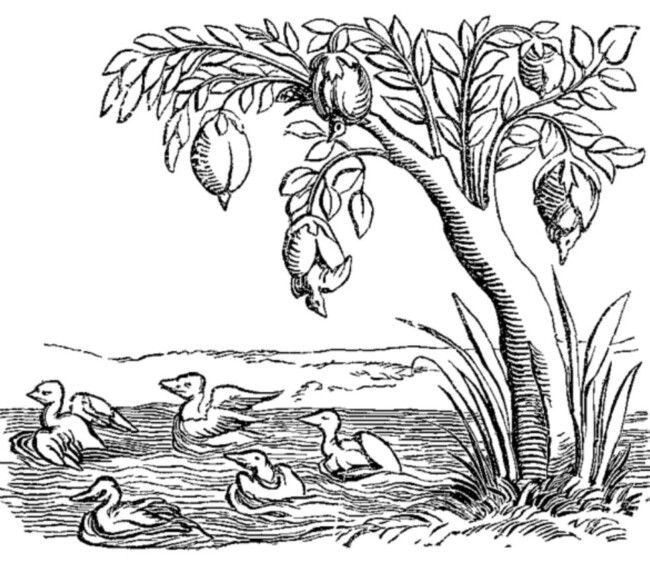
Photo Credit: Creative Commons
Silly Goose!
Even the Pope believed this myth.
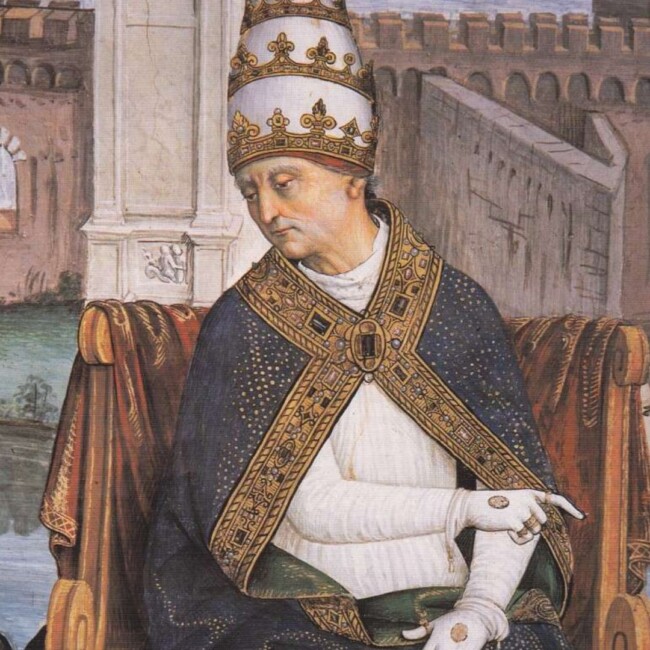
Photo Credit: Public Domain
In 1435, Aeneas Silvius Bartholomeus (who went on to become Pope Pius II) traveled to Scotland where he encountered and included the myth in his influential manuscript “de Europa:”
“…there was once a tree growing on the bank of a river which produced fruits shaped like ducks. When these were nearly ripe, they dropped down of their own accord, some onto the earth, and some into the water. Those that landed on the earth rotted away, but those that sank into the water instantly came to life, swam out from below the water, and immediately flew into the air, equipped with feathers and wings.”
Darwin Settles The Barnacle Debacle
The great “Goose Barnacle Myth” also led to the apocryphal naming of the “Goose Barnacle,” where scientists believed the geese were born from “spontaneous generation.”
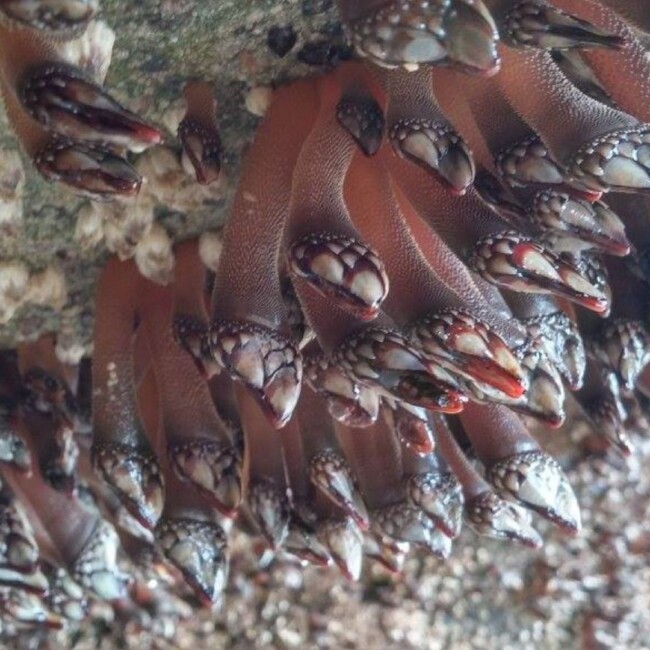
Photo Credit: Creative Commons, Joseph Marty
Barnacles themselves were an enigma to the scientific community who could not figure out how to classify them. Some said mollusk, others said crustacean — many still insisted on goose. The debate was finally put to rest by none other than Charles Darwin who dedicated eight years of his life to studying barnacles (1846-1854).
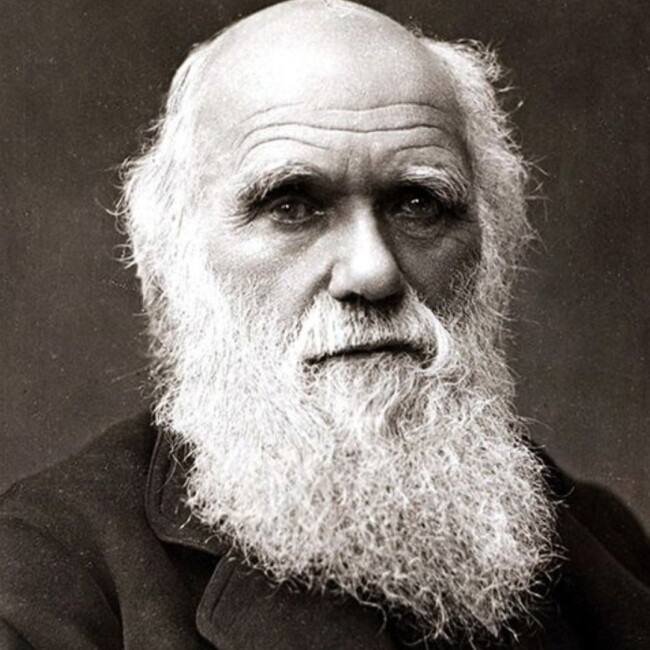
After dissecting thousands of barnacles, Darwin famously declared: “I hate a Barnacle as no man ever did before, not even a Sailor in a slow-sailing ship.” (For the record, Darwin chose “crustacean”).
See More: The Montclair Hawkwatch: The Ultimate Local Spot to See Hawks
Everybody Loves The Jersey Shore
Another reason to love this bird? They love the Jersey Shore. 70% of all Atlantic Brant choose the Jersey Shore for wintering, and unlike other out-of-state visitors, their 3,000-mile migration from the Arctic causes no traffic on the Garden State Parkway.
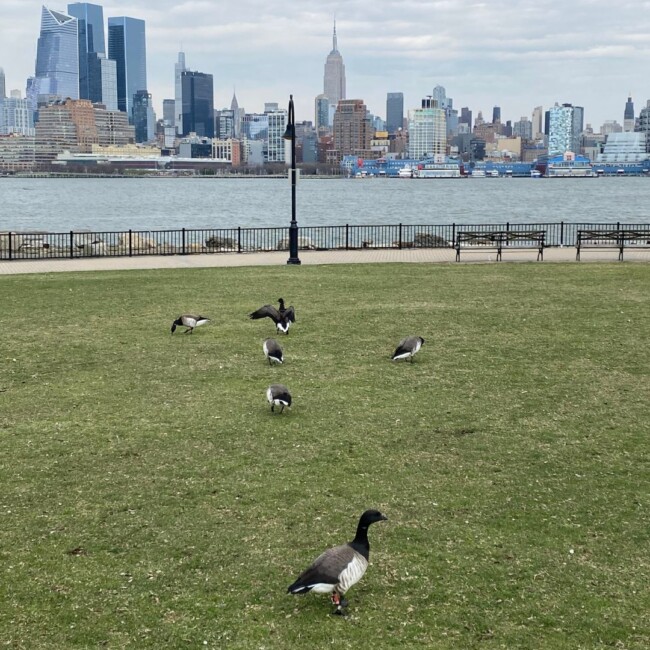
So make sure to take a gander, and appreciate this magnificent goose before they begin their migration back to the Arctic…or maybe into barnacles, you never know?

